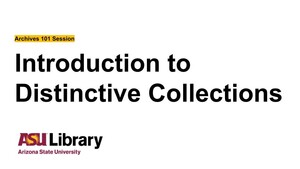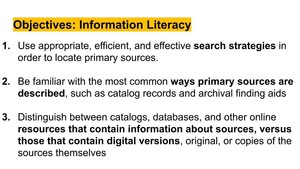Thank you for stopping by our blog! I am Claudia Willett, Project Archivist with Distinctive Collections at ASU Library. I hold an MLIS in Archives Management and an MA in History from Simmons University. Before coming to ASU in November 2018, I worked as a processing archivist at Boston University. My office is at Fletcher Library on ASU’s West campus where I am processing a large political papers collection. In addition to archival preservation and access work, I am passionate about engagement, outreach, and advocacy for archives and libraries. My firm belief is that it is not good enough to have the material at your institution. It is our professional responsibility to bring the community in and emphasize that the collections are for everyone and that we are here to teach people how to access and utilize them. This guiding principle inspired the Archives Toolkit project.
As we all begin to consider what our return to campus will look like, Distinctive Collections is preparing to foster opportunities for students and integrate new instruction tools for faculty to explore and utilize primary sources available at ASU. Over the last year Allinston Saulsberry, Librarian for Undergraduate Research Instruction, and I developed foundational lesson plans and an instruction presentations toolkit to create intentional engagement with the basic concepts of archives, collections, and primary source research.
In our first meeting, Allinston and I asked one another, “When did you first learn about archives?” Allinston did not have a concrete memory of learning about archives until she was an undergraduate student. I grew up with a librarian who moonlighted as a mom so I had indirect knowledge early on but no independent research experience until I was in high school. This conversation led us to reflect on the reality that students coming to ASU will absolutely have varied levels of understanding that a) the University has these materials, b) they can (and should!) use them, and c) the material will strengthen their research inquiry process.
These initial instruction sessions break into two parts: Introduction to Archives 101 and 102. Introduction to Archives 101 is our bibliographic instruction session focusing on the true fundamentals. This plan is meant to create a clear and unencumbered first memory of learning about archives, particularly archives at ASU.

What is an archives? What is an archivist? These are the first questions we use to initiate conversation in the session. The remainder of the session introduces the Distinctive Collections website, ASU Library's Digital Repository, the resesarch database Arizona Archives Online, and instructions on how to make a research appointment. We also focus on archival terminology that might create stress for new researchers and possibly deter them from coming in to research if they don’t know what they mean.

Archives 102 is our archival research instruction session which works to build on the information from Archives 101. This lesson plan focuses on information literacy and using primary sources in critical inquiry. Topics range from what is a primary, secondary, and tertiary source, to the differences between digital surrogates and original records and how they are described.
The intention is for these plans to be part of an iterative process in which we can build out our toolkit to meet the needs of the ASU community and our other community members, including our K–12 learners and teachers. Distinctive Collections also plans to offer monthly seminars highlighting themes and collections so that we are ready to find a way to connect with you when our doors are open again.
If you have questions or an interest in engaging our Intro to Archives sessions for your class, contact Allinston Saulsberry or me for more information. For general inquiries please contact Ask an Archivist.